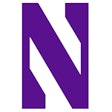Eleven defendants are found negligent in a drowning case; "Sports Law" contributor John T. Wolohan offers an opinion about damages and how a business owner, though negligent, could avoid paying them.
Case Summary
By: Andrew Cohen The death of a child - a parent's and a business owner's worst nightmare - isn't all that pleasant for jurors, either. In Santa Barbara, Calif., a jury spent most of April wrestling with culpability for one such tragedy, returning after three days of deliberations to award Oded and Anat Gottesman $16.3 million in compensatory and punitive damages in the drowning of their four-year-old son, Yoni.
It was near the end of Yoni's first day of camp at Cathedral Oaks Athletic Club in August 2005 when (as a surveillance video later showed) a counselor tossed him in the pool and appeared to dunk him. Not long after, with Yoni's body floating facedown in the middle of the pool, inattentive camp employees (two lifeguards, three camp counselors and a swim instructor were on duty) milled around at the side of the pool, and one of the lifeguards left his station to buy a soda. Yoni was in the pool for eight minutes before he was noticed by another camper and CPR was attempted at poolside. Yoni had barely passed a swimming test earlier that day, and the instructor determined that the boy should remain in the pool's shallow end, which is a minimum of 42 inches deep; Yoni was 41 inches tall.
The Gottesmans sued 11 individuals and entities, 10 of which admitted negligence in the case, including Cathedral Oaks Athletic Club and its staff members. The 11th entity, Cal-West Group (the then-owner/operator of Cathedral Oaks), denied it was negligent and said that it didn't oversee the day-to-day operations of the club. But jurors unanimously determined Cal-West was negligent, and that this negligence was a substantial factor in causing harm.
Richard Berti, Cal-West's primary owner, sold off Cathedral Oaks and the group's four other clubs in 2006, a move that he described as innocent. However, a June hearing is scheduled that may eventually lead to another trial, during which the Gottesmans' attorney intends to show that Berti "fraudulently sold assets."
Four of the defendants (Cathedral Oaks; Julie Main, an owner of West Coast Athletic Clubs, which also apparently was or is part owner of Cathedral Oaks; and Cathedral Oaks' general manager and aquatics director) were found to have acted with "willful misconduct," with Cathedral Oaks liable for most of the $2.3 million in punitive damages. All 11 defendants will share the burden of the $13.8 million in compensatory damages and $30,000 in medical, funeral and burial expenses. Because the trial revealed that Cathedral Oaks lacked proper state permits to provide childcare, it is possible that liability insurance will not cover the damages.
John's Opinion
When a child dies through the negligent actions of a service provider, as the court determined was the case in Yoni Gottesman's death, the courts attempt to compensate the family for their loss by awarding monetary damages. While no one believes that the money will ever make up for their loss, the idea behind damages is to compensate the family for their medical expenses, pain and suffering and lost wages (compensatory damages). In addition, for truly outrageous conduct, the court can award punitive damages that are intended to punish individuals for their negligent conduct.
Typically, when an employee negligently injures someone while performing his or her job within the normal scope of employment, the injured party is able to collect any damages for the injury from the employer under the theory of vicarious liability. The theory behind vicarious liability is that the employer should be responsible for all the actions of his or her employees that occur during the course of their employment.
Knowing that they may be personally liable for the negligent acts of their employees, it is common for sports and recreation facility owners to try to shield themselves from liability by incorporating their business. Under business law, a corporation is a separate legal entity from the owners and shareholders. Therefore, while the corporation may be subject to vicarious liability, the owner is not. For example, if the Cal-West Group (as owner of the Cathedral Oaks Athletic Club) was incorporated, then it, and not Richard Berti, would be liable for all damages associated with Yoni's death.
While allowing those in the best position to safeguard the facility and with the deepest pockets to shield themselves behind a "corporate veil" may seem outrageously unfair, especially to the injured party, if sports and recreation facility owners did not have this type of individual protection, they would be extremely reluctant to offer any activities.




































